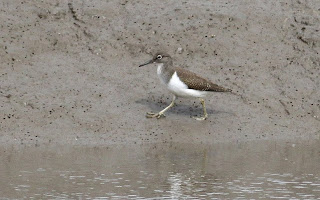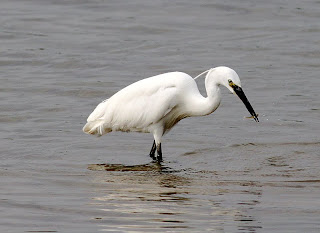This morning was the first for more than a week without rain and/or wind, so a spot of mist netting beckoned. I went to Rawcliffe alone this morning because Will has gone fishing to Scotland for a week and as punishment for being unavailable for ringing, has strict orders to bring back a large salmon.
At the beginning of the farm track a number of birds mobbed a Tawny Owl then further down near the barn my car disturbed two early rising Kestrels which took off over the fields. As the days shorten the start time remains dawn, the hour a bit more civilised, but early enough to see Roe Deer searching through the crop fields of the moss.

The chore is putting up nets alone so I made do with a little less, catching reasonably well if only in a couple of bursts. I caught a total of 17 birds, 16 new with only one recapture, a Whitethroat. New birds were 4 Willow Warbler, 2 Chiffchaff, 5 Whitethroat, 1 Dunnock, 1 Reed Bunting, 1 Sedge Warbler, 1 Wren and 1 Robin.






The morning sky was completely clear with a touch of haze and no cloud, hardly the best for visible migration and I wasn’t surprised when I recorded nil movement apart from a dawn Golden Plover and a dozen or two Swallows.
I was finishing off the last bird a Wren, definitely time to finish then, ready to take down the nets when in the distance I spotted a large raptor heading north. The Buzzards have been pretty secretive around here so I took a look through my bins to see a Marsh Harrier flying fairly purposefully, pausing briefly to hover legs dangling, over a large, isolated, distant hawthorn. I changed from my short lens and grabbed a few hazy shots, the story of my life, as the bird motored on over towards Pilling Moss.


A good morning and maybe it wasn't the end of the summer after all?



















































.jpg)












